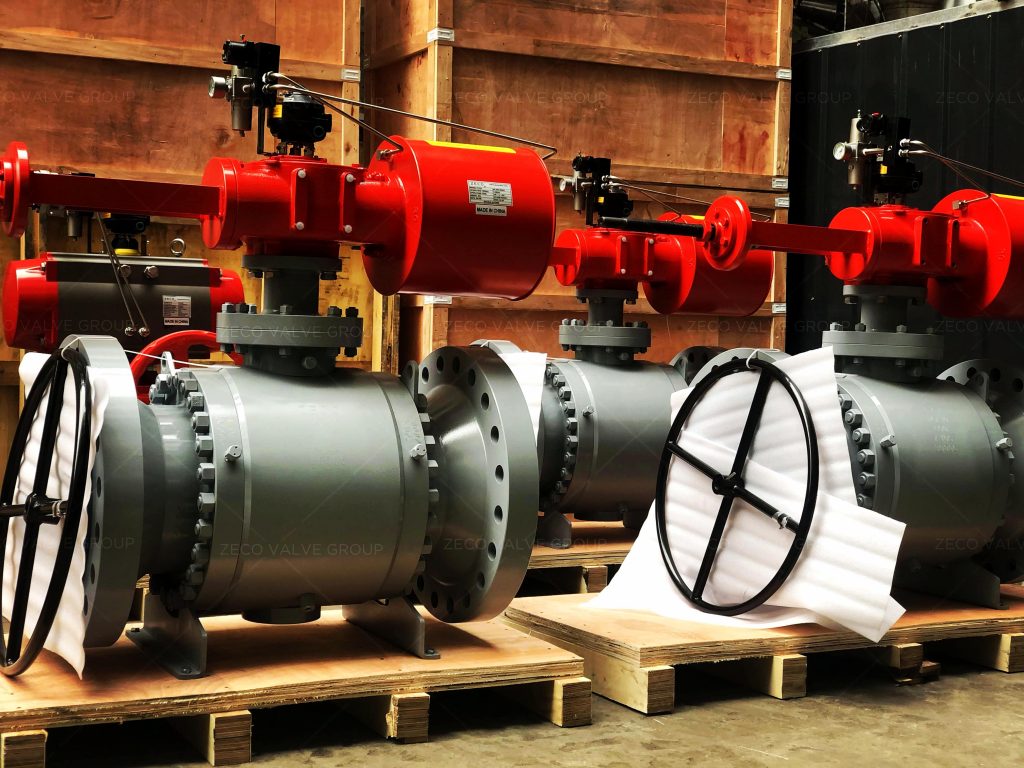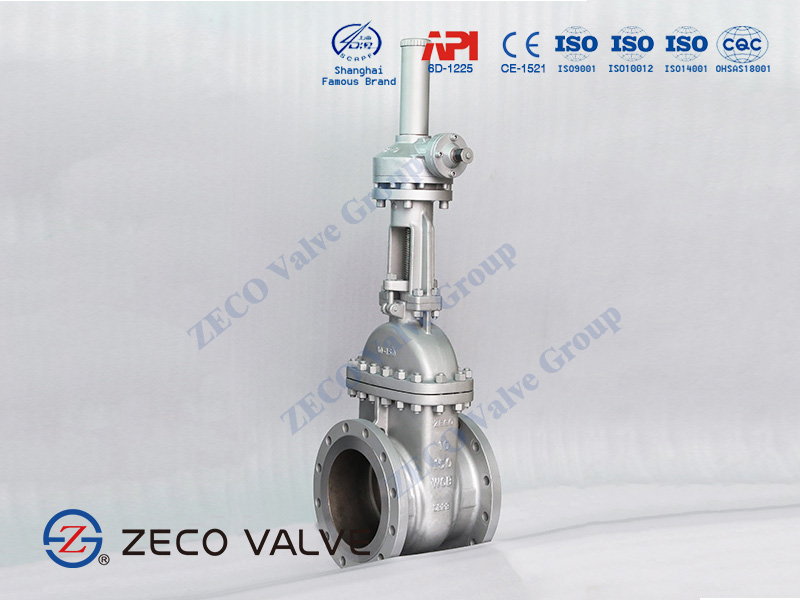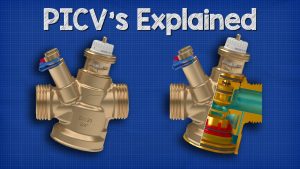What is a Ball Valve?
Ball valves are also called “shut-off valves.” Ball valves are the only way to immediately shut off the flow of water. The gate valve cannot be turned immediately. Except for three-way ball valves, machined stops can prevent most ball valves from moving more than 90 degrees.
Ball valves can be designed with multiple openings, also known as ports. Two-way ball valves have two ports and are used for basic on/off control. There are also multi-port valves that are used in applications that need to divert media in different directions or that may require more than one source of media.

What is a Gate Valve?
Gate valves are used to completely stop or start the flow of fluid through a pipeline by lifting or lowering a solid, rectangular gate. These valves consist of a valve body, seat, disc, spindle, gland, and actuator.
Gate valves are not used to regulate flow — they are designed to be fully open or fully closed. These valves are slower than quarter-turn valves (like ball valves) because they require more than a 360° turn to change the position of the gate, whereas a ball valve requires only a 90° turn to cycle from open to closed or vice-versa. Because of this, gate valves may not be the best choice for applications that require frequent operation or fast cycle times. Gate valves are most commonly controlled by a manual handwheel, but electric and pneumatic actuation options are also available.

Ball Valve vs Gate Valve
Working Mechanism of Gate Valve vs Ball Valve
A gate valve employs a gate to control the medium flow. Gate is a solid disk that is connected to a stem, acting as a barrier. Gate valves are commonly operated by an actuator, e.g. handwheel. The actuator is connected to a valve stem and transmits rotational energy to it. This energy turns the threads of the valve stem into the gate when the gate valve is opened and vice versa when the gate valve is closed. Hence, the gate is moved upward or downward by this energy. Because it requires more than a 360° turn to fully open or close this valve, it is also known as a multi-turn valve. The valve is opened by lifting the gate out of the flow path. As the gate is lowered to its original position, the bore is sealed, and the valve is totally closed.
A ball valve employs a rotary ball with a hole inside it to control the flow of media. The ball is attached to the valve stem. When the handle on the stem is turned, the ball rotates, opening or closing the valve. Because the handle only needs to be turned 90 degrees (quarter turn) to allow or stop the medium flow, this valve is also known as a quarter turn valve. In the case of manual operation, when the valve is open, the handle is flat in line with the flow, and when it is closed, it is perpendicular to it, allowing for easy visual confirmation of the valve’s status. The 1/4 turn in the closed position can be done in either a clockwise or counter-clockwise direction.
Valve Flow Direction of Gate vs Ball Valve
Ball valves and gate valves, by convention, is bi-directional. This means that ball valves have the capacity to block the media from both the upstream end and the downstream end.
Valve Seal Capacity of Ball vs Gate Valve
Gate valves are designed so that the valve disk is completely sealed when the valve is closed. This makes them ideal for high-pressure applications where a leak-free seal is crucial. On the other hand, ball valves have a small hole in the center of the valve disk. This allows them to be opened and closed more quickly than a gate valve, but it also means that they are not as effective in sealing in high-pressure situations.
What is the Difference Between A Gate Valve and Ball Valve?
Gate valves usually have a round knob, which you can turn to control the flow of water. This raises or lowers an internal gate to stop or start the water. The gate valve provides control over the flow pressure, rather than simply closing or opening it. Gate valves provide users with greater flow and pressure control than ball valves, but they do not provide users with the option to stop the flow immediately. For those who wish to use gate valves but are concerned about corrosion, stainless steel gate valves are incredibly flexible and are not more susceptible to corrosion than ball valves.
Before asking the question “Is a ball valve better than a gate valve”, we need to determine the key difference between the two. The first thing to remember is that they all have essentially the same function, which is why they are so similar.
The main difference between ball valves and gate valves lies in the quality of their structure and the way they are marked. When the gate valve is opened, the circular or rectangular gate is lifted from the fluid passage, while the ball valve has a rod and a horizontally rotating ball. This is why ball valves are often called rotary valves.
The gate valve has a sealing surface that separates the gate plate and the valve seat. Therefore, they are usually used when a straight-line flow of fluid and minimal restriction are required. Because the ball valve is a form of the quarter-turn valve, their functions are different. They use hollow balls, both perforated and rotated to control the flow. When the ball hole is consistent with the flow, the valve opens. When the valve handle rotates 90 degrees, it closes, and the handle lies flat. It is horizontal to the flow when it is opened, and perpendicular to the flow when it is closed. This makes it easy to visually confirm the state of the valve.
Which is Better Ball Valve vs Gate Valve?
Ball valves are durable, performing well after many cycles, and reliable, closing securely even after long periods of disuse. These qualities make them an excellent choice for shutoff applications, where they are often preferred to gates and globe valves. That said, they do lack fine control in throttling applications.
Although ball valves tend to cost slightly more than gate valves of comparable quality, the minimal saving is not worth the potential issues that are likely to follow. Moreover, ball valves seal much tighter – and are therefore much less prone to leaks – than gate valves because of their 100 percent shut-off characteristics. Ball valves offer greater longevity, and a lower rate of failure, and are easier to use than gate valves.
Related Tags :
Ten articles before and after
Butterfly Valve Introduction Guide
Can a Ball Valve Be Used As a Control Valve?
The Differences Between Ball Valves And Butterfly Valves
Difference Between Gate Valve And Butterfly Valve
How To Operate And Actuate a Butterfly Valve
Shanghai International Pump And Valve Exhibition
Daily Maintenance And Maintenance Of Ball Valves
Advantages And Disadvantages Of Butterfly Valves And Gate Valves












